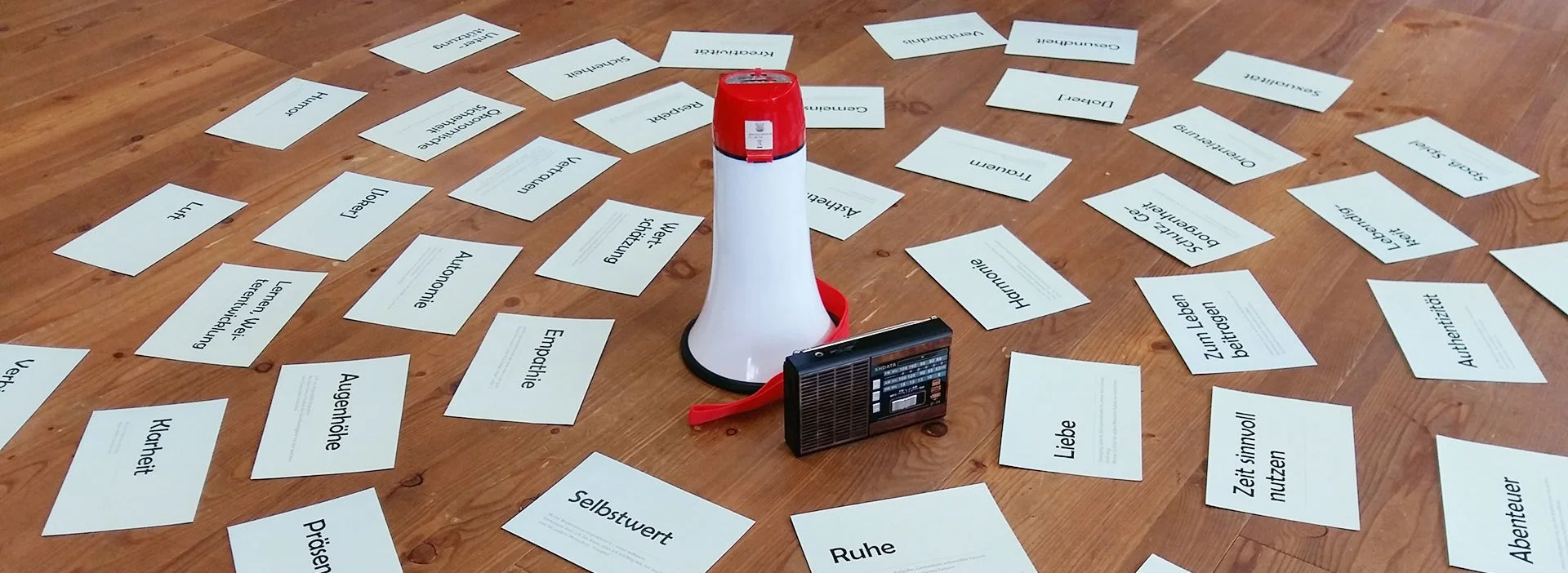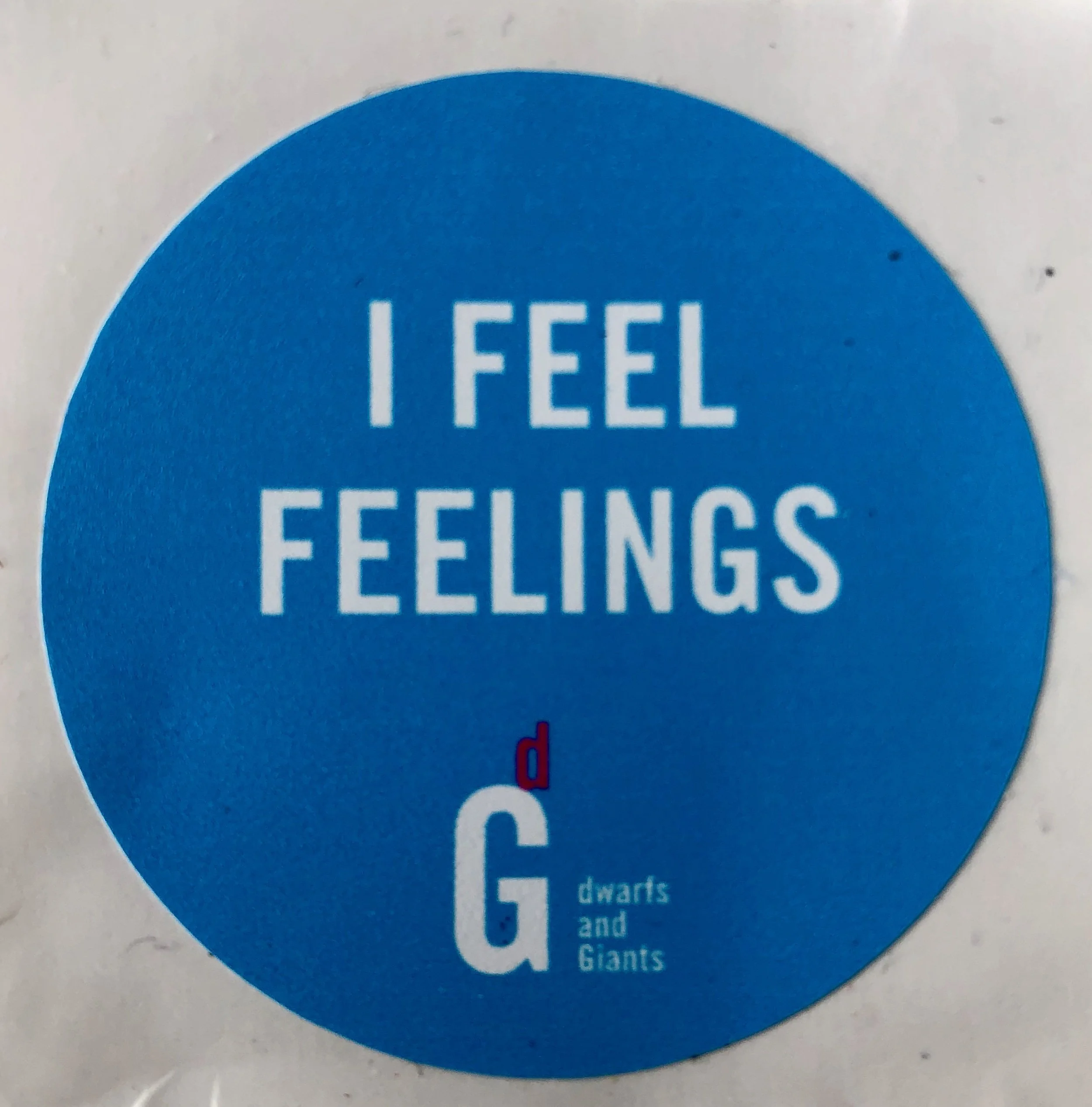The Human Aspect - Holacracy’s Missing Piece?
Holacracy has great mechanisms to deal with governance and tactical issues. But what about the human side? What about relationships? What about our personal interactions in the workplace?
Many have criticised Holacracy for not being complete, for being a system that only deals with the work and not the people. So why not add the human aspect to how Holacracy works?
Our friends from dwarfs and Giants have done exactly that. They have designed a way to process relational tensions in the workplace and Brenda and I were recently fortunate to be part of their two-day Clear the Air workshop in Vienna.
Relational tensions?
Tensions in Holacracy are the gap between what is and what could be, they are constructive discontent. They are that little niggle, that feeling of tension in the back of our mind that tells us that something is not as good as it could be.
Holacracy provides mechanisms to process governance tensions (related to how the “work works”, i.e. things like processes, feedback mechanisms, decision making authority, etc) and tactical tensions (tensions about the actual work) but relational tensions are an important part of our workplaces too.
Most of us have had small niggles with others, felt annoyed with a colleague or felt unappreciated for something we have done. But we find it very hard to talk about these things at work, often these tensions feel not big enough to “make a drama” or we want to avoid conflict and ignore the tensions until they either go away or accumulate into being a big deal.
These relational tensions do exist and we need to find better ways to process them in the workplace. The “Clear the Air” format aims to do just that.
What is “Clear the Air”?
Clear the Air (CTA) is based on an adapted version of non-violent communication (NVC).
It assumes that everything anyone does is an attempt to meet positive, universal needs. A need is for example the need for acceptance, appreciation, autonomy, collaboration, growth, meaningfulness or clarity. There are many more needs, and I’m still using the long list Georg Tarne and Jones Kortz gave us during the course to remember them all.
We develop strategies to fulfil our needs: We have a glass of wine to relax, we take on new roles to fulfil our need for growth and we ask questions to obtain clarity. What we learned is that conflict happens at the strategy and not the needs level. Simply put, if I get annoyed with you for listening to loud music and you find me boring for turning off all sounds, we are both trying to fulfil the same need for relaxation but using different and conflicting strategies to fulfil them. Feelings such as annoyance, resentfulness, boredom, excitement or curiosity (again a long list) are key indicators for a need being met or unmet.
We often confuse feelings and assumptions and jump to conclusions about intent. For example I might say I feel ignored - but that’s not really a feeling. It’s a negative assumption that will be heard as an accusation and trigger a justification. That was a bit of a breakthrough for me and trying to establish the underlying needs instead of making assumptions and jumping to conclusions will be something I’ll be focusing on getting better at in the future.
With the underlying concepts of needs, feelings, strategies and assumptions in place we can use the Clear the Air meeting format to process relational tensions.
How does it work?
The meeting itself is for up to 12 people, takes about two hours and follows the typical structure of a Holacracy meeting: A check-in, resolving tensions, (appreciations) and a check-out.
Tensions are processed one by one and prioritised at the beginning of the meeting. Prioritisation is done by assessing the intensity of the tension and the number of people involved. The higher the intensity (10 is higher than 1) and the more people involved, the higher the priority. During prioritisation it is important not to describe the tension or the people affected upfront in order to avoid that anyone who has been named loses the ability to focus on anything but “OMG, someone has a tension with me”.
Once relational tensions have been prioritised they are processed one by one using techniques from NVC and reflective listening. Processing a tension starts with the person feeling the tension grabbing a (turned-off) megaphone and the affected person a radio receiver (if it’s more than one person it’s one representative). The sender and receiver then take turns talking and reflecting back their understanding of what they have just heard. Once they have a shared understanding of the issue they analyse which needs have been left unmet and find a way for both parties to develop strategies that can meet everyone’s need(s).
I found the explicit talking and listening roles during the conversation very helpful. They allowed for a conversation with no interruptions and full attention on listening to what everyone said.
Georg recommends running CTA meetings every 4-6 weeks and has run them successfully with his company Soulbottles over the past years.
My conclusions
I believe CTA has the potential to be the missing piece of Holacracy: It could be a way to make sure relational tensions are acknowledged and processed in a constructive way.
Of course CTA can be used without running Holacracy - its sweet spot is any self-organising system be it holocratic, agile, sociocratic or anything else.
My deeply held belief of the value of travel has been re-enforced. I have been exposed to new ideas and have shared experiences and insights with a diverse, international group of people.
What now?
I was a bit worried that the workshop would be too touchy-feely and tree hugging for my taste but thanks to the excellent facilitation of Georg and Jones and the sensible pragmatism of the workshop participants this fear didn’t eventuate.
I am keen to practice some of the new things I have learned but feel a bit like a child with a stick of dynamite: I have something exciting, powerful and slightly dangerous on my hands that without proper skill and experience can cause other people harm. I most definitely won’t be one of the creepy coaches Tony O’Halloran is referring to and will instead practice my new knowledge in a fully transparent way on my colleagues from Nomad8 (which they will find about about by reading this post).
If you'd like to know more about Clear the Air I recommend signing up for dwarfs and Giant's the next workshop "The Human Side of Work" in Vienna or Berlin.



